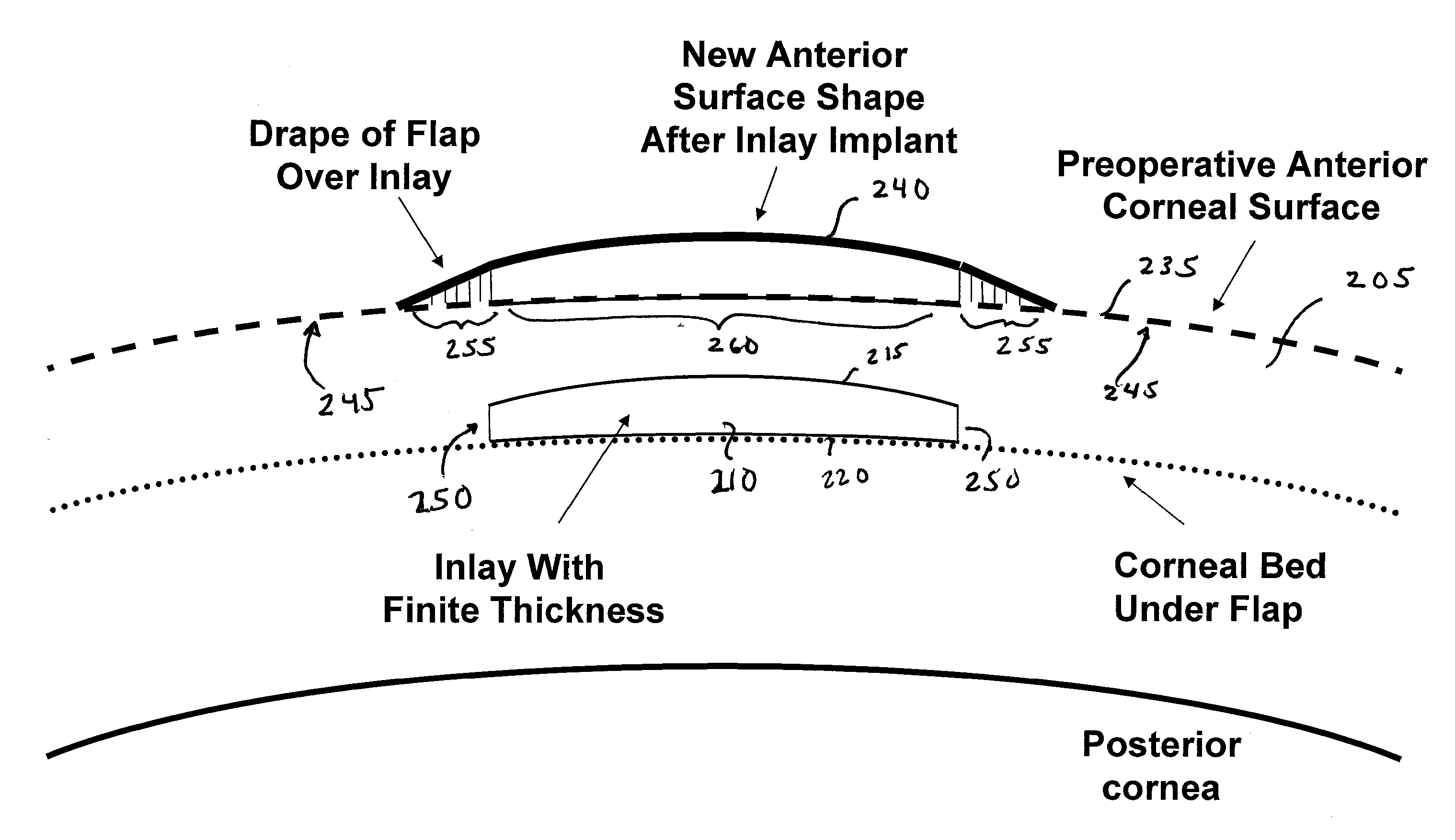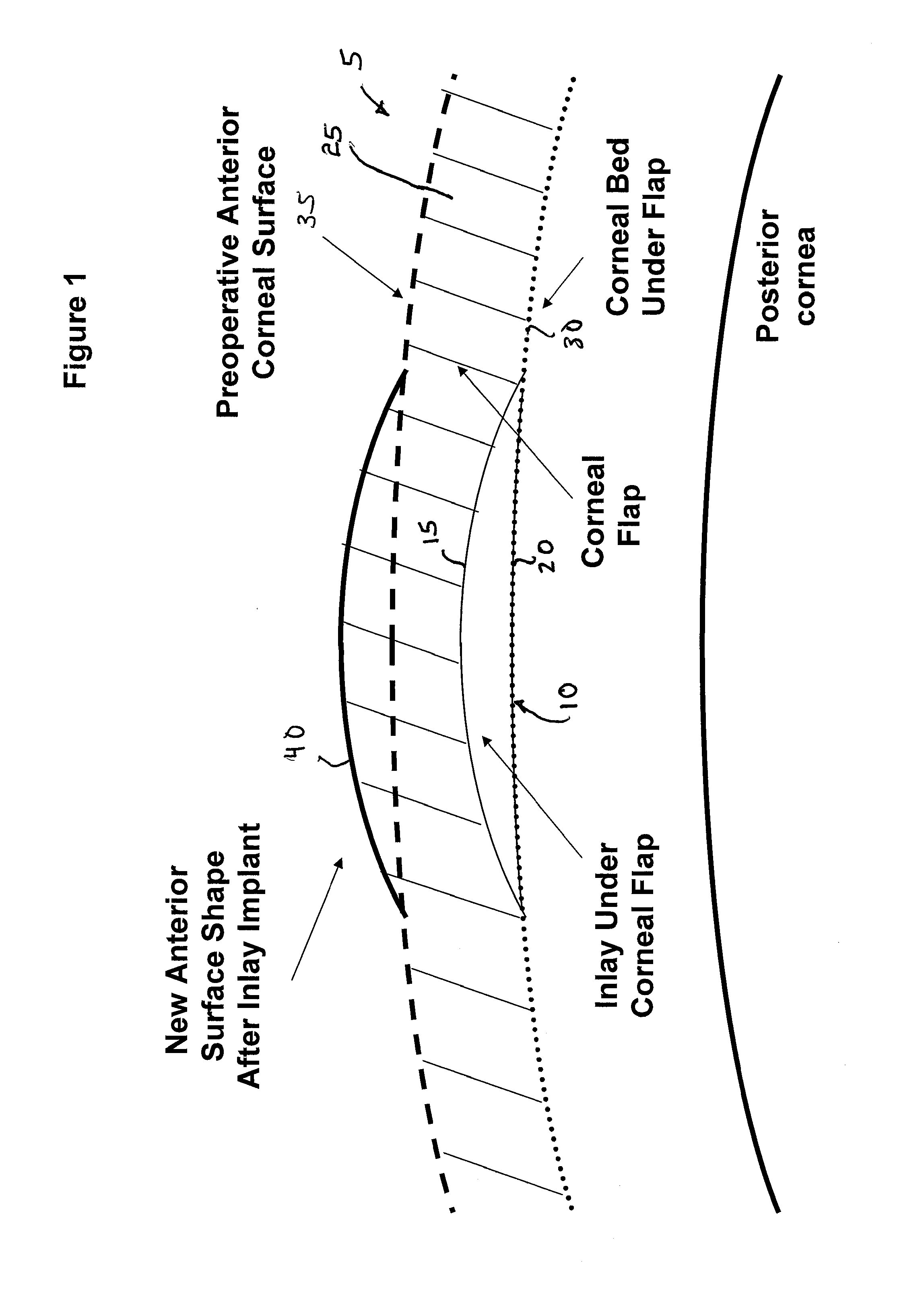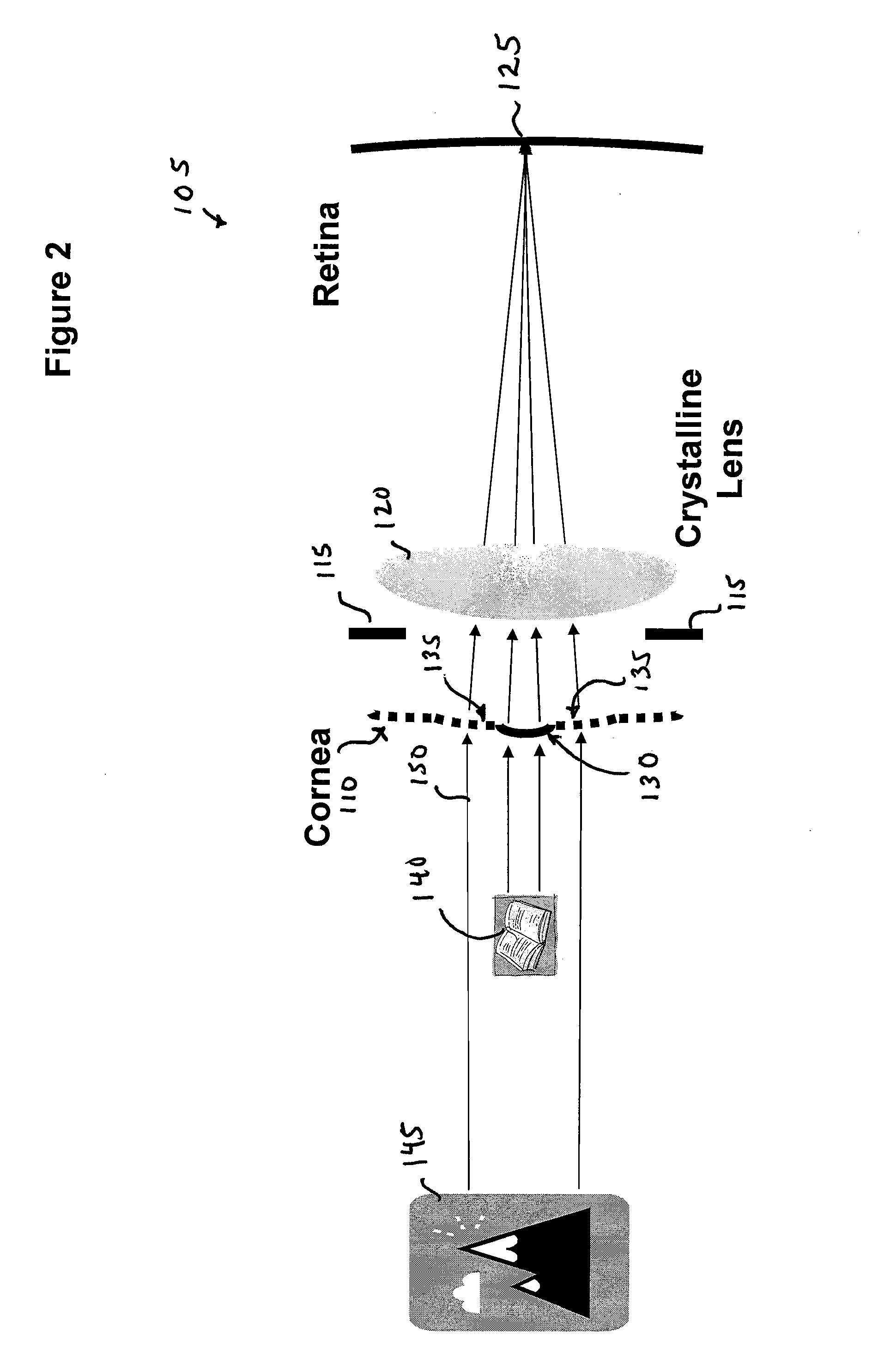Small Diameter Inlays
a small diameter, inlay technology, applied in the field of corneal implants, can solve problems such as vision impairmen
- Summary
- Abstract
- Description
- Claims
- Application Information
AI Technical Summary
Benefits of technology
Problems solved by technology
Method used
Image
Examples
Embodiment Construction
[0020]FIG. 1 shows an example of an intracorneal inlay 10 implanted in a cornea 5. The inlay 10 may have a meniscus shape with an anterior surface 15 and a posterior surface 20. The inlay 10 is preferably implanted in the cornea at a depth of 50% or less of the cornea (approximately 250 μm or less), and is placed on the stromal bed 30 of the cornea created by a micro keratome. The inlay 10 may be implanted in the cornea 5 by cutting a flap 25 into the cornea, lifting the flap 25 to expose the cornea's interior, placing the inlay 10 on the exposed area of the cornea's interior, and repositioning the flap 25 over the inlay 10. The flap 25 may be cut using a laser, e.g., a femtosecond laser, a mechanical keratome or manually by an ophthalmic surgeon. When the flap 25 is cut into the cornea, a small section of corneal tissue is left intact to create a hinge for the flap 25 so that the flap 25 can be repositioned accurately over the inlay 20. After the flap 25 is repositioned over the in...
PUM
 Login to View More
Login to View More Abstract
Description
Claims
Application Information
 Login to View More
Login to View More - R&D
- Intellectual Property
- Life Sciences
- Materials
- Tech Scout
- Unparalleled Data Quality
- Higher Quality Content
- 60% Fewer Hallucinations
Browse by: Latest US Patents, China's latest patents, Technical Efficacy Thesaurus, Application Domain, Technology Topic, Popular Technical Reports.
© 2025 PatSnap. All rights reserved.Legal|Privacy policy|Modern Slavery Act Transparency Statement|Sitemap|About US| Contact US: help@patsnap.com



